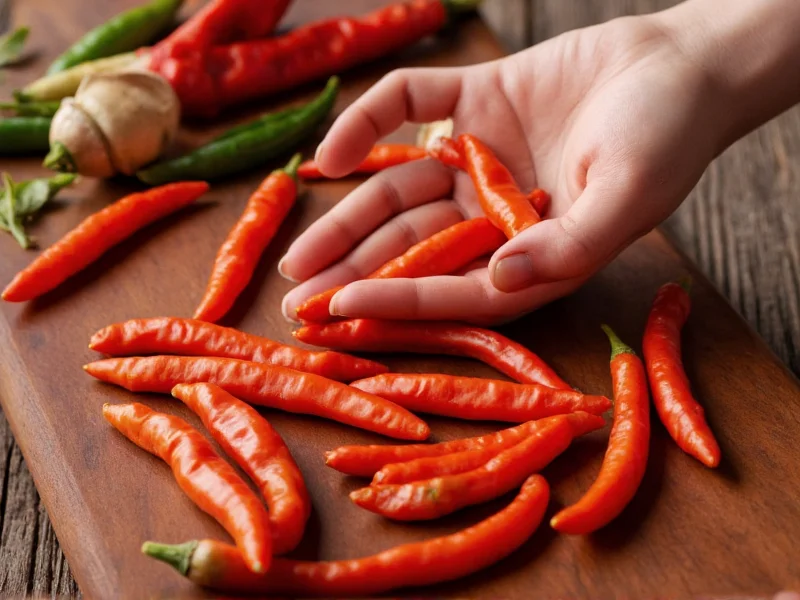If your chili has become too spicy, immediately add dairy products like sour cream or milk, acidic ingredients such as lime juice or vinegar, or sweetness from sugar or honey. These ingredients chemically bind with capsaicin (the compound causing heat) to neutralize spiciness. For best results, start with small amounts and taste as you go—1/4 cup dairy, 1-2 tablespoons acid, or 1-2 teaspoons sweetener per serving. Never add water, as it spreads the heat rather than reducing it.
When you've poured your heart into a pot of chili only to discover it's unbearably spicy, panic sets in. The good news? You have multiple science-backed options to rescue your dish without starting over. Understanding how to tame down spicy chili requires knowing what works chemically, not just following kitchen folklore.
The Science Behind Spicy Chili Fixes
Capsaicin, the compound in chili peppers responsible for heat, is oil-soluble and binds to pain receptors in your mouth. Effective solutions work by either dissolving this compound or counterbalancing its effects. Water won't help—it's why drinking water after eating spicy food provides only temporary relief.
7 Proven Methods to Reduce Spiciness in Chili
1. Dairy Products: The Most Effective Solution
Milk, sour cream, yogurt, or even cheese contain casein, a protein that breaks capsaicin's bond with pain receptors. For fixing chili that's too hot, stir in 1/4 cup of full-fat dairy per serving. Whole milk works better than skim because capsaicin dissolves in fat. Add gradually while simmering for 5-10 minutes to allow integration.
2. Acidic Ingredients: Balance the Heat
Lime juice, vinegar, or tomato paste can neutralize spiciness by changing the pH. The acid helps break down capsaicin molecules. Add 1-2 tablespoons of acid per serving, stirring well. For how to make spicy chili less spicy without altering flavor significantly, apple cider vinegar works well with tomato-based chilies.
3. Sweetness: Counterbalance the Burn
Sugar, honey, or maple syrup counteracts heat perception. Add 1-2 teaspoons per serving, stirring until dissolved. Brown sugar adds depth to meat-based chilies, while honey complements vegetarian versions. This method works particularly well for reducing heat in chili recipe without changing texture.
4. Dilution: Increase Volume
Add more non-spicy ingredients to dilute the heat. Consider these options:
| Ingredient | Amount per Serving | Best For |
|---|---|---|
| Beans or lentils | 1/2 cup | Vegetarian chili |
| Tomato sauce | 1/4 cup | Tomato-based chili |
| Shredded chicken or beef | 1/4 lb | Meat-based chili |
| Vegetable broth | 1/2 cup | All chili types |
5. Starchy Solutions: Absorb the Heat
Raw potato chunks or rice added directly to simmering chili can absorb some capsaicin. Add one peeled, diced potato per quart of chili and simmer for 15-20 minutes before removing. This method works best as a chili too spicy fix when you need to maintain liquid consistency.
6. Fat-Based Neutralizers
Cream, coconut milk, or even a pat of butter can help dissolve capsaicin. Stir in 2-3 tablespoons per serving. This approach works particularly well for neutralizing spiciness in chili when dairy isn't an option.
7. Time and Temperature
Sometimes the simplest solution is to let your chili simmer longer. Extended cooking time allows some capsaicin to evaporate. Keep the lid off and simmer for 20-30 minutes, checking periodically. This method works best for how to tone down spicy food when you have time before serving.
What NOT to Do When Fixing Spicy Chili
Avoid these common mistakes that could ruin your dish:
- Don't add more spices—this compounds the problem
- Avoid excessive water—it spreads heat rather than reducing it
- Don't over-dilute—adding too much extra liquid makes chili watery
- Don't add salt—it enhances heat perception rather than reducing it
Preventing Overly Spicy Chili in Future
The best solution is prevention. When making chili:
- Add hot ingredients gradually, tasting as you go
- Remove seeds and membranes from fresh peppers (where most capsaicin resides)
- Use milder pepper varieties like ancho instead of habanero
- Consider adding spicy elements toward the end of cooking
Special Considerations for Different Chili Types
Adjust your approach based on your chili's base:
- Meat-based chili: Dairy and starches work best
- Vegetarian chili: Acidic ingredients and beans provide balance
- White chili: Lime juice and sour cream maintain color integrity
- Bean chili: Additional beans or corn help dilute heat











 浙公网安备
33010002000092号
浙公网安备
33010002000092号 浙B2-20120091-4
浙B2-20120091-4